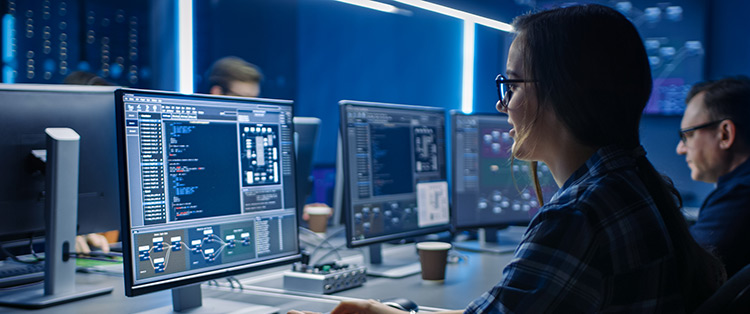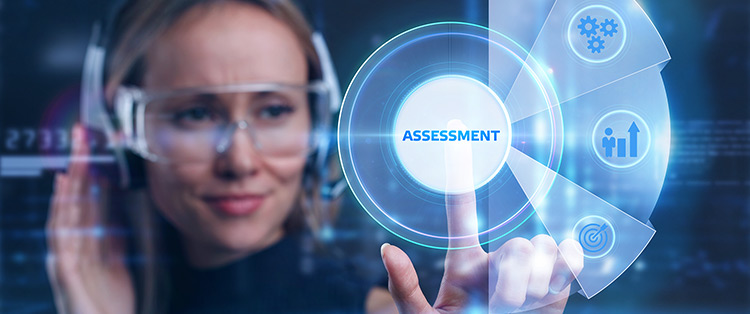Talent Acquisition
Talent acquisition (TA) has continually evolved over the years. However, it now faces a period of unprecedented change following the global COVID-19 pandemic, changes in how and where we work, widening of the digital skills gap and the rise of automation, AI and machine learning.
In this section, we explore the issues affecting TA teams and provide insights and expert advice on preparing for the future of work and talent acquisition.
What is talent acquisition?
Before we start, let's first explain what talent acquisition means. The term talent acquisition (TA) refers to the process of attracting, screening, assessing, interviewing and hiring new employees to fill open positions. Large organisations usually have a dedicated TA team working alongside or within the human resources (HR) department.
Talent acquisition consists of several disciplines: employer branding, candidate attraction, assessment, interviewing, and onboarding. Many larger organisations will have specialists in each domain.
What's the difference between talent acquisition and recruitment?
The two terms are often considered interchangeable. However, they are quite different. Recruitment typically focuses solely on the task of filling open vacancies, if you need a new cleaner, personal assistant or forklift driver, for example.
Talent acquisition is a far more strategic and long term approach. The focus is on identifying the skills an organisation requires to achieve its current and future business objectives. It's then developing and executing a plan to find the candidates, specialists or leaders with the appropriate skills and capabilities.
The impact of COVID-19
The global COVID pandemic has had a profound and long-lasting impact on talent acquisition. Over the last 18 months, almost without notice, employers have had to drastically rethink their approach to recruitment completely, adapt to social distancing and move to home working.
It's been amazing to witness the speed at which this transformation has taken place. From working in offices to working from the kitchen table or spare room. From interviewing candidates face to face to Zoom calls or Teams meetings. TA teams worldwide have stepped up and continued to source and nurture the best candidates despite all the challenges.
But what is the lasting impact of the COVID-19 pandemic? Numerous studies and polls suggest that fully remote or hybrid working is here to stay. For example, in a recent survey by People Management, just 15 per cent of respondents said they planned to make office attendance mandatory.
According to a survey by Flexjobs, almost 60% of employees say they would quit their job if forced to return to the office, and more than a third of employees want to work from home permanently. Just 2% of employees would like to return to the office full-time.
After the sudden shock of the pandemic, organisations are now looking to adjust, even revolutionise, their ways of working, their approach to employee mobility and strategic workplace planning. We regularly hear from both politicians and business leaders that now an opportunity to "build back better".
We will be exploring this subject in more detail in articles over the coming months.
Changes to the working environment
As mentioned above, working from home or remotely will remain the norm for many of us. For those working in talent acquisition, this will undoubtedly continue to present challenges, but equally, it should offer opportunities to work smarter.
Over the past 18 months, we've witnessed the accelerated transition to virtual assessment and interview tools. As a result, many candidates now complete their entire recruitment process online. From their initial application, through online assessments, video interviews, virtual assessment centres, and live video interviews, candidates can do everything remotely.
This shift has not only overcome the challenges of recruiting during lockdowns, maintaining social distancing and keeping both candidates and recruiters safe. The move to a virtual process has delivered both significant cost and efficiency benefits.
Subscribe to get all our latest content
More Talent Acquisition Resources

5 Tactics To Improve Your High-Volume Recruitment Delivery

Candidate Experience & How To Boost It In Volume Recruitment

Best-Practice Graduate Recruitment Programme Blueprint

How Artificial Intelligence Transforms Volume Recruitment

How COVID-19 is changing the UK recruitment industry

How To Build An Attractive Graduate Package

How To Position Yourself As An Employer Of Choice For Graduates

How to recruit the top graduate talent

How to reduce cost-per-hire in high-volume recruitment

How To Run A Successful Graduate Assessment Centre

Interview Questions To Uncover The Best Graduates

Quality of hire in high-volume recruitment

